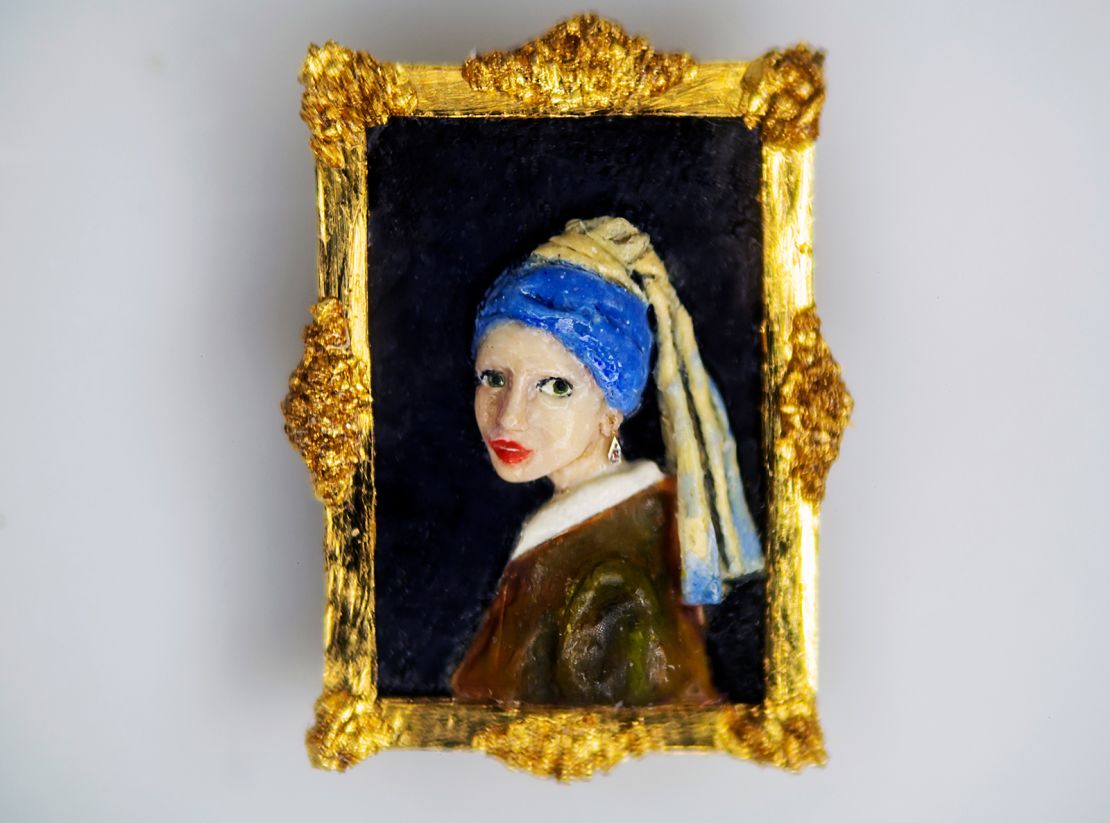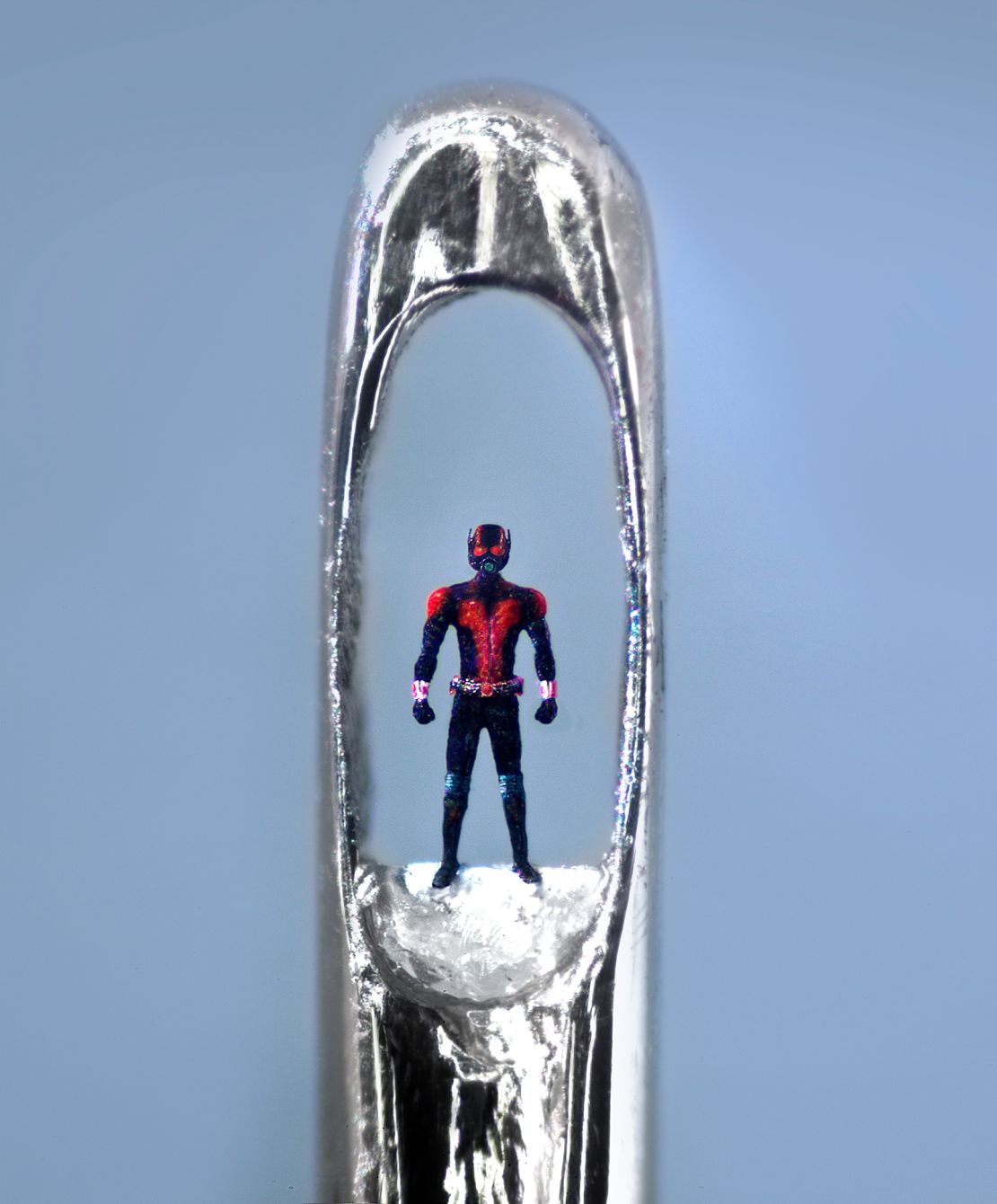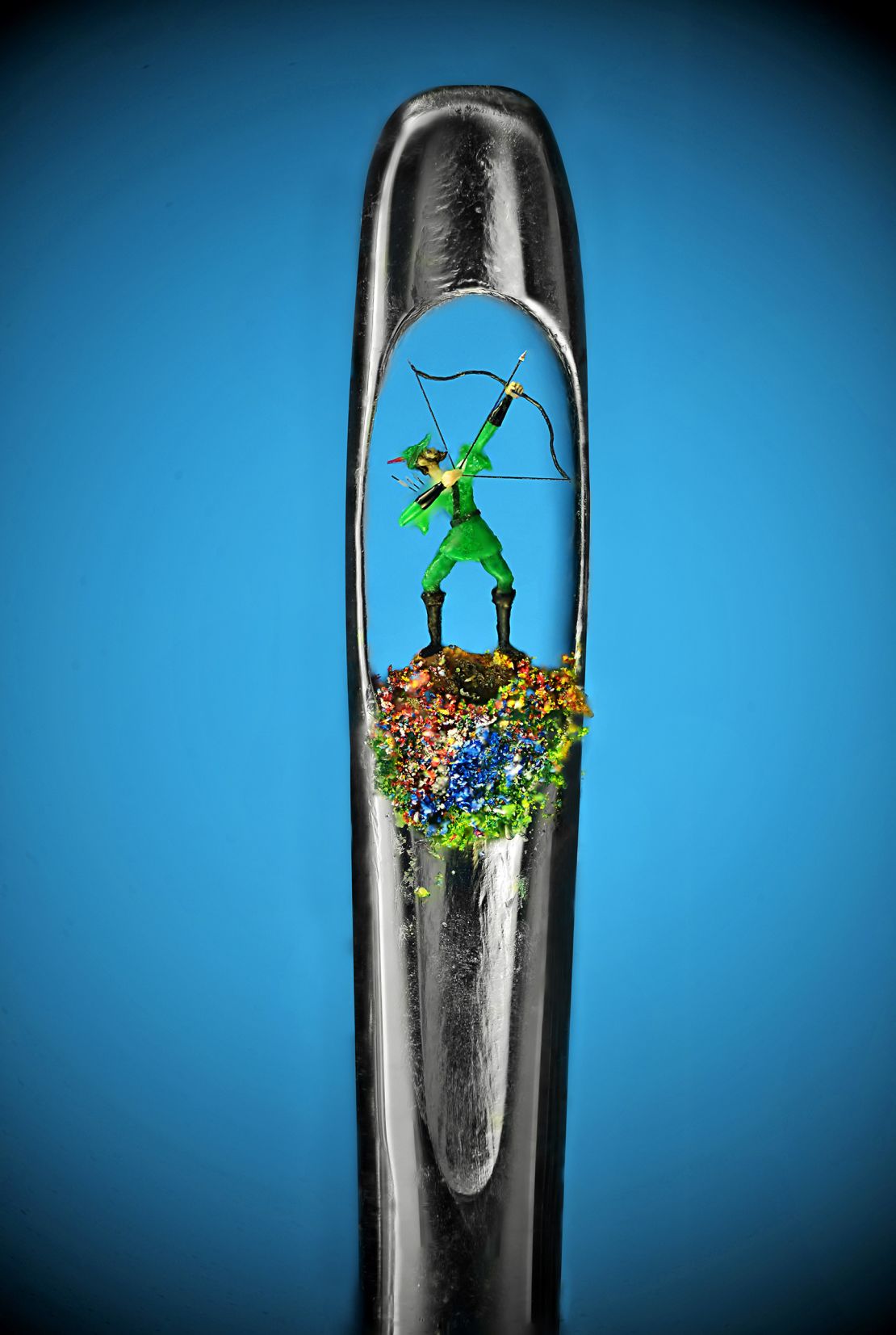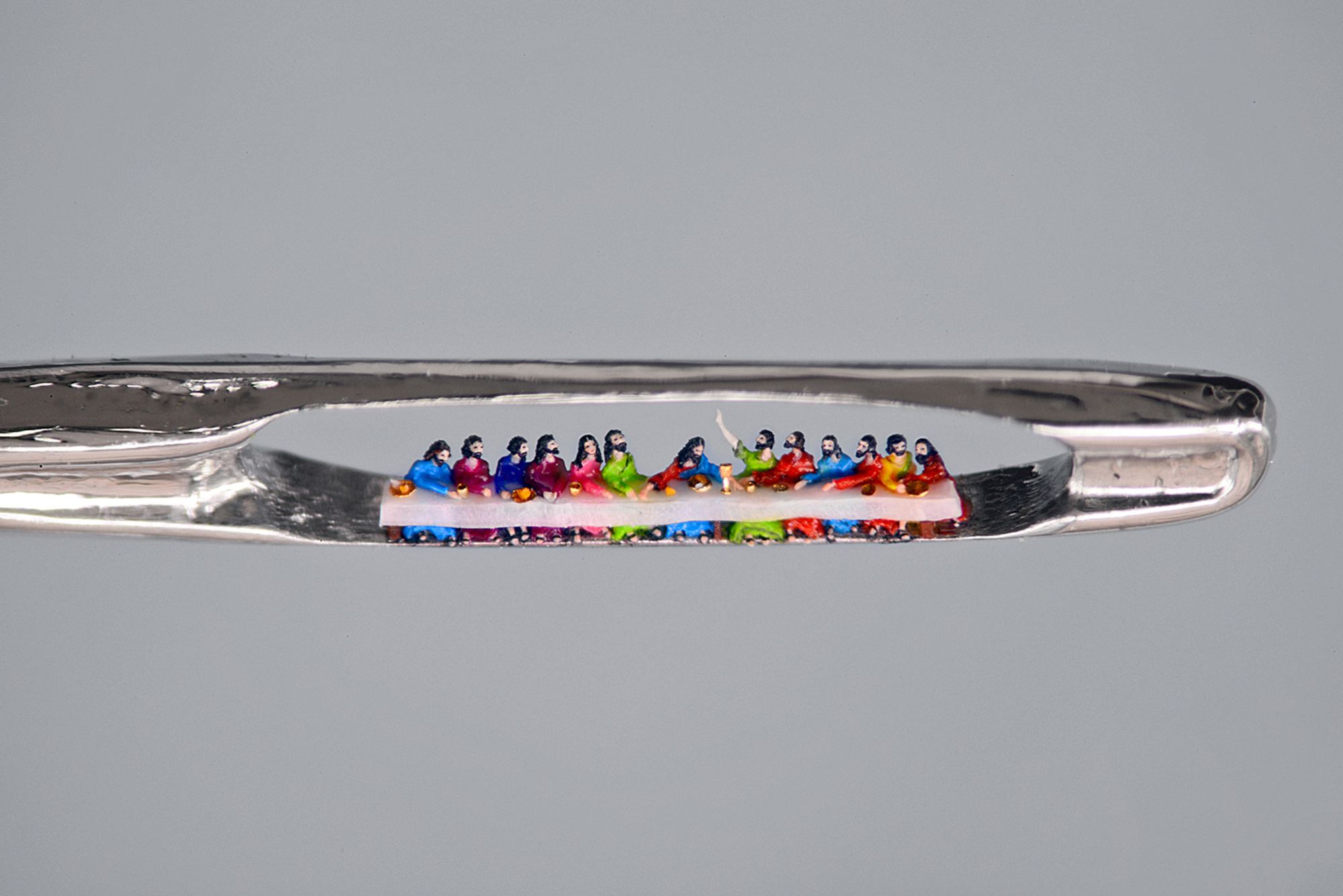A series of microscopic art pieces, so small that they fit into the eye of a needle, will go on display in the UK this weekend.
From Saturday until October, Wollaton Hall in the city of Nottingham, northern England, will host a free “Miniature Masterpieces” exhibition featuring 20 sculptures from renowned artist Willard Wigan.
The tiny masterpieces on display include a depiction of Jesus and the 12 apostles during the biblical scene of “The Last Supper,” sculptures of William Shakespeare and Albert Einstein, and the fictional characters Pinocchio and Robin Hood, as well as a recreation of famous Dutch artist Johannes Vermeer’s “Girl With A Pearl Earring” painting.

Four never-before-seen art pieces that will be showcased will form part of the artist’s “Disappearing World” collection, which aims to reflect biodiversity in danger and promote conservation.
“We’re connecting art to a message of small things matter in a disappearing world,” Wigan’s manager John Bowden told CNN on Wednesday.
“We’d like for people to come and see the exhibition and take away a message, understanding that the smallest things in life can have the biggest impact. Willard’s work is the smallest artwork that anyone will ever see that will have the biggest impact on them,” he added, stating that he hopes the exhibition forms a community and movement to “create change within a biodiverse world.”
An eyelash for a paintbrush
To make microscopic art, Wigan first needs to make incredibly small tools. These tend to be made from sharpened acupuncture needles and slivers of diamond broken into microscopic shards, the artist told CNN on Wednesday.
He then paints his sculptures with an eyelash and must work between each of his heartbeats because, under the microscope, a heartbeat makes fingers move, and one mistake can take a while to correct.

The process is “painstaking,” according to Wigan, who said he must watch his diet, drink a lot of water and keep his body in good condition because “you have to train your dexterity. You’re training your mind, body and your soul to keep still.”
The artist can work on four or five sculptures at a time, working 16 hours a day for up to five weeks.
“I don’t actually enjoy making them. I just enjoy when I finish them because they stress me out,” Wigan added. “But once they’re made, the glory is when other people see it. When you see people with disbelief on their face, not being able to kind of explain what they’re seeing, that gives me so much pleasure.”

Art as a ‘defense system’
Wigan, whose work was once gifted to Queen Elizabeth II, has autism and dyslexia and said he was “underestimated” and “looked down upon,” with his teacher at school telling him he would achieve nothing.
He said his life experiences have been a driving force for his art: “It’s like a defense system to say ‘no, just because someone has a learning difference, that doesn’t mean to say they don’t have anything to offer.’”

The micro artist and his team are taking “Disappearing World” into schools in Nottingham through an outreach program to further spread the message that “it’s the small things we can all do, that if we do them together, will get big changes,” said Bowden.
“I’ve used my work as a voice that speaks for me and speaks for the world and speaks for the planet as well,” added Wigan.
At a later date, Wigan plans to exhibit 14 camels he sculpted and placed in a single needle eye.
The artist’s first record-breaking handmade sculpture, which was made in 2013 and will be on display in the exhibition, is of a motorcycle Wigan made from 24-carat gold and placed in a hollowed-out hair from his neck, according to his website.
He broke his record in 2017 with a sculpture of a human embryo that he made from a fiber from his carpet and placed in a hollowed-out strand of his hair. It’s 0.07822 millimeters (just over 0.003 inches) long and 0.05388 millimeters (just over 0.002 inches) wide, according to Guinness World Records.
